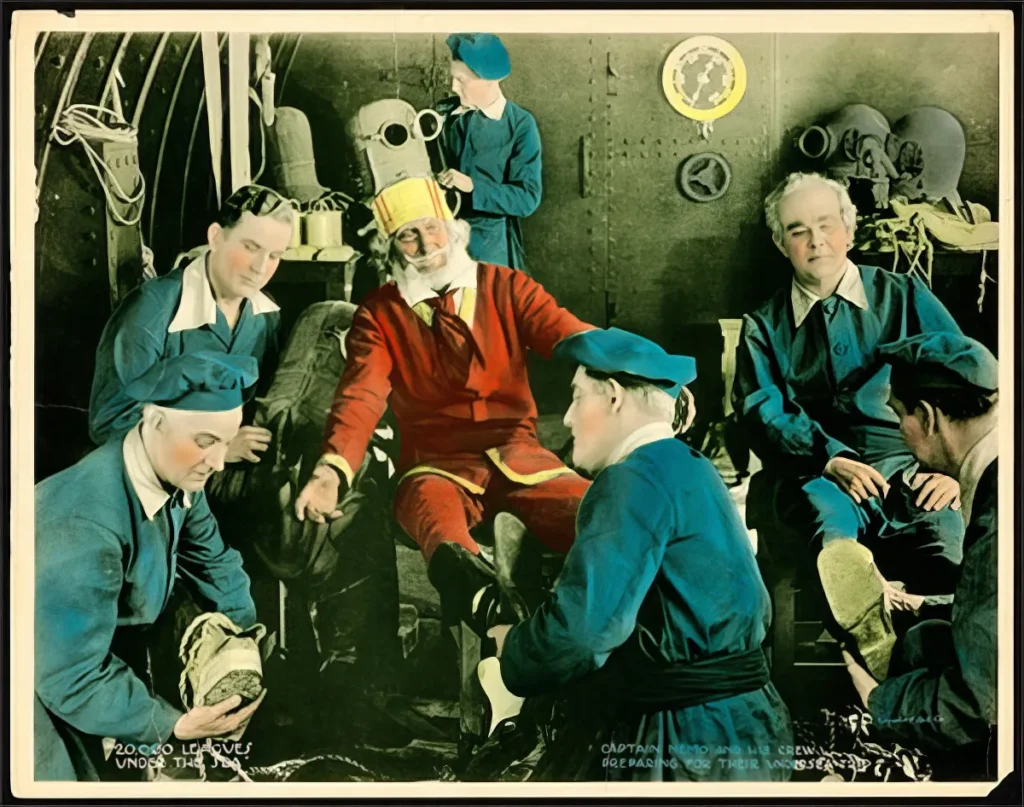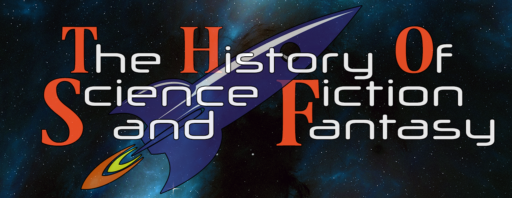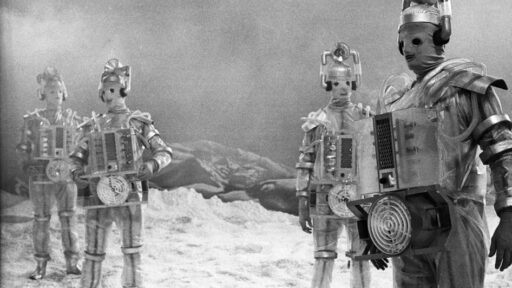The period from 1910 to 1919 was dominated by war. The First World War erupted in 1914 and ended in 1918. That would have been enough for one decade but in 1917 the Russian Revolution(s) occurred. It’s not surprising then that all of this death, destruction and political turmoil had an impact on the works produced during the time.
But that wasn’t the only thing driving culture and society. Scientific advances continued at a rapid pace. One huge breakthrough was Albert Einsteing’s General Theory of Relativity which lead to speculation about time-travel and anti-gravity, both of which still feature in science fiction. Another major advance was Ernest Rutherford’s discovery of the atomic nucleus which significantly reshaped our view of the world. And then there was electronics.
Edgar Rice Burroughs
Perhaps the single most important genre writer during this period is Edgar Rice Burroughs. He is best known to the general public for his creation Tarzan in 1912 with Tarzan of the Apes. While the book does have some fantastical qualities, it’s not really genre fiction as such.

Burroughs first published story though was A Princess of Mars, also in 1912, which introduced us to the world of Barsoom (or Mars as we so prosaically call it here on Earth). This began the Sword and Planet genre, something which has largely died out in the modern day at least partly due to the fact that it doesn’t mesh well with current scientific understanding. But it was a staple of pulp fiction for many years.
A Princess of Mars was originally published in All-Story Magazine with the title Under the Moons of Mars and it was credited to Normal Bean. As well as Barsoom the story introduces us to John Carter and Dejah Thoris, Princess of Helium. It was republished as A Princess of Mars in 1917.
A lot of Burroughs’ work was published in All-Story Magazine, including 1913’s The Gods of Mars which was a prequel to A Princess of Mars. Then in 1914 we were presented with the subterainian world of Pellucidar in At The Earth’s Core. It and it’s sequel Pelucidar which was published in 1915 described a hollow earth which was lit by a miniature sun and populated by both savage tribes and fantastic creatures.
While the science behind Pellucidar is obviously deeply flawed, it is interesting to compare some of the core conceits with something like say Ringworld by Larry Niven which in some ways is giving the same concept a more hard SF spin.
Magazines
It would be another two decades before the pulp magazines really hit their peak, but even at this early stage an increasing amount of science fiction was being published.
Hugo Gernsback is a pioneer of the genre and his connection with it begins in 1911 when he published Ralph 124C41+: A Romance of the Year 2660 in his own magazine Modern Electrics. The story managed to predict amongst other things radar, tape recorders and television. Two years later Gernsback started a series of science based comic stories called The Scientific Adventures of Baron Munchausen. While remarkably in it’s speculation it is not generally considered a good story, lacking much in the way of plot or character.

Cavalier magazine was another source of early science fiction. Garrett P. Serviss’ The Second Deluge was published in 1911 and offers a retelling of Noah with a flood from outer space. George Allen England’s serials Darkness and Dawn, Beyond the Great Oblivion and The Afterglow were published there between 1912 and 1913. In 1914 Cavalier merged into All-Story Magazine under Robert H. Davis and continued to feature science fiction stories including Charles B. Stilson’s Polaris of the Snows trilogy, Abraham Merritt’s Through the Dragon Glass, The People of the Pit, The Moon Pool and Murray Leinster’s The Runaway Skyscraper.
The first true science fiction magazine though might be the Swedish magazine Hugin which was first published in 1916 under editor Otto Witt.
Also worthy of note is Children of Kultur by Milo Hastings which was published in True Story magazine. Later re-issued as City of Endless Night, it has been claimed that this was the inspiration for Fritz Lang’s Metropolis. Which leads me nicely into the topic of…
Science Fiction Films
Science fiction movies really began to blossom in this decade. In 1910 Frankenstein was adapted to the silver screen for the first time by Thomas Edison’s studios, directed by J. Searle Dawley.
1916s Homunculus was the most popular serial in Germany during World War I. This six part silent movie was about a scientist who creates a “perfect” creature which seeks revenge on humanity when it discovers it has no soul. Perhaps of particular interest is the fact that Fritz Lang was an assistant working on this movie.

Another 1916 movie was 20,000 Leagues Under the Sea by Universal Studios which featured some impressive underwater footage shot in a watertank and has the claim to being the first movie ever filmed underwater. This was actually the second movie adaptation, Georges Melies having released a version in 1907.
Denmark’s Himmelskibet (“The Airship” ) which was released in 1918 with a plot about the daughter of the High Priest of Mars ending planetary war.
HG Wells science fiction story The First Men in the Moon was adapted in 1919 by Bruce Gordon and J.L.V. Leigh.
Finally 1919s Die Spinnen (The Spiders) is worth a quick mention if only because it was directed by Fritz Lang.
Books
While the genre still didn’t have a collective name, it was become a more and more popular subject for writers to tackle. In 1911, F. W. Mader published Wunderwelten (Distant Worlds) which is claimed to featured the first example of faster than light spaceship travel in fiction.
William Hope Hodgson gave us another example of apocalyptic science fiction (a sub-genre that seems destined to last forever) with The Night Land in which the last humans are holed up in a seven mile tall pyramid, attacked by mutants and monsters on a future earth where the sun has gone out.
Of course one of the most popular preoccupations for writers then, just as now, was to try and predict future technology based on current developments. Bernhard Kellerman’s Der Tunnel in 1913 was one of the best selling novels of the first half of the 20th century. It’s protagonist wanted to build a tunnel from Europe to America but the novel also predicts airplanes being able to make the trip faster.
In 1915 (after the start of World War One) Guy Thorne predicted armored tanks a couple of years before they first appeared in his novel The Cruiser on Wheels. While in 1920 the world was finally introduced to robots (or at least the word) with Karel Capek’s R.U.R.
Of course writers were also tackling the social issues of the time. Charlotte Perkins Gilman’s 1915 novel Herland presents a society composed entirely of women who reproduce through asexual reproduction. The story was actually published as a serial and did not make it to novel format until 1979. It is an early example of feminist science fiction.
Many more science fiction books were published during this decade so here are a few more:
- 1914 – The World Set Free by H G Wells
- 1915 – The Star Rover by Jack London
- 1918 – The Moon Pool by Abraham Merritt.
- 1920 – A Voyage to Arcturus by David Lindsay.
Discover more from Veristopia
Subscribe to get the latest posts sent to your email.








